“From time to time in the history of science, situations have arisen in which a problem of ultimately enormous importance went begging for adequate attention simply because that problem appeared to involve phenomena so far outside the current bounds of scientific knowledge that it was not even regarded as a legitimate subject of serious scientific concern. That is precisely the situation in which the UFO problem now lies. One of the principal results of my own recent intensive study of the UFO enigma is this: I have become convinced that the scientific community, not only in this country but throughout the world, has been casually ignoring as nonsense a matter of extraordinary scientific importance.”1McDonald arrived at that opinion after several authorized visits to the U.S. Air Force’s UFO Project Blue Book to review its files. Indignant at what he discovered, he wrote, “There are hundreds of good cases in the Air Force files that should have led to top-level scientific scrutiny of [UFOs] years ago, yet these cases have been swept under the rug in a most disturbing way by Project Blue Book investigators and their consultants.”2
McDonald’s full statement before Congress may be found in the U.S. Congressional Record, as well as on the Internet. While acknowledging that the overwhelming majority of UFO sightings undoubtedly had prosaic explanations, and that a great many questions about the phenomenon remained unanswered, McDonald succinctly summarized his conclusions regarding the most credible of the unexplained cases: “My own present opinion, based on two years of careful study, is that UFOs are probably extraterrestrial devices engaged in something that might very tentatively be termed ‘surveillance.’”3
Frequently, UFO skeptics—scientists and laypersons alike—invoke Occam’s Razor to support their position that there are far more likely, prosaic explanations for the UFO phenomenon than the extraterrestrial spaceship theory. Unlike McDonald, these persons have never studied UFOs and are, therefore, offering uninformed opinions—whether they choose to recognize this fact or not.
In essence, the principle of Occam’s Razor states that, all things being equal, the simplest explanation for an unexplained phenomenon is probably the correct one. In other words, conventional explanations—natural or man-made phenomena—undoubtedly account for all UFO sightings.
But is the basic premise of simplicity-as-truth always valid, or is it flawed? Consider, for example, gravity. The explanation for it offered by Isaac Newton—whereby physical objects possess an attractive property, proportional to their mass, that draws them toward one another—appears simple, straightforward, and fits the observable facts. Indeed, the English scientist’s revolutionary theory, experimentally validated, provided an explanation of gravity which endured unchallenged for over two hundred years. Then along came Albert Einstein.
In the early 20th Century, Einstein created his own, one-man scientific revolution by introducing the twin theories of Special and General Relativity. Among other things, General Relativity postulates that space and time are an inextricably interconnected entity which is distorted, or curved, by the presence of physical objects. In fact, said Einstein, gravity is actually a function of curved space-time. Hence, Newton’s apple did not fall to the ground because of the attractive property of the Earth. Rather, the Earth created a curved depression in space-time and the apple merely took the path of least resistance by sliding down into it. Oh, by the way, Einstein also found that gravity bends light.
One un-simple aspect of Special Relativity is the dilation of time, whereby it moves faster or slower, depending on whether it is being measured on a stationary or moving timepiece. Moreover, says Einstein, moving objects actually shorten in length in the direction they are traveling. And, last but not least, matter and energy are variations of the same thing and, sometimes, a handful of matter can release enough energy to destroy a city.
All of this is simple stuff, right? Old Occam would get it, wouldn’t he? Well, maybe not.
After an extensive evaluation of experimental data, science now considers Einstein’s explanation of gravity to be the correct one. But is it the simplest one, as Occam’s Razor dictates it should be? Is it less complicated, more reasonable and straightforward than Newton’s?
No, it is not. In fact, the bizarre, mind-bending, often paradoxical principles advanced by the two relativistic theories still elude the intellectual grasp of most of humanity one hundred years after they were published. Nevertheless, physicists have long considered Einstein’s ideas to be perceptive and accurate assessments of cosmological order and function. That said, those ideas certainly can not—by any stretch of the imagination—be described as simple, common sense answers to important questions.
If the concepts advanced by Einstein’s theories do not effectively challenge the simplicity-as-truth premise of Occam’s Razor, or sufficiently affront common sense, then consider what the other pillar of 20th Century science, the Theory of Quantum Mechanics, proposes.
One tenet, called the Uncertainty Principle, asserts that the more we know about a particle’s location in space, the less we can know about its velocity. Conversely, the more we know about any given particle’s velocity—by measuring it—the less we can know about its location. Another Quantum principle states that certain attributes of particles, including position, velocity, direction of movement, and spin, can not even be defined until they are observed. Before that moment, any given particle exists in what is termed a “superposition of states.” In other words, its very nature can not be said to exist until it has first been examined. Finally, Quantum Theory maintains that light—composed of waves of photons—exists as a “wave-particle duality”, in which it is neither one nor the other but nevertheless exhibits certain properties of both.
Physicists Gary and Kenny Felder write:
Quantum mechanics says that…the photon really, genuinely, and importantly, does not have a specific location until we measure one. [This] doesn’t seem to make sense. But another school of thought says, why should it make sense? After all, humans evolved in a world of ‘normal’ objects, and we developed a facility called ‘intuition’ that helped us survive in that world, by helping us predict the effects of our actions. That physical intuition was, and is, a great asset. But perhaps it shouldn’t be too surprising that it becomes a liability when we try to apply it to areas that we didn’t evolve for. Quantum mechanical laws generally only have measurable effects when applied to things that are too small to see, so we never evolved an understanding of them, so they seem bizarre. In fact, at roughly the same time that quantum mechanics first began to suggest that very small things defy our intuition, Einstein was proposing his special theory of relativity which shows that very fast things defy our intuition; and then his general theory of relativity, which concerns the odd behavior of very big things.4In other words, taking into account both Relativity and Quantum Mechanics, much of what early 21st Century scientists consider to be factual, that is, “real”, is not simple or straightforward at all. In fact, it’s downright counter-intuitive. Despite this state of affairs, the vast majority of UFO skeptics have yet to consider the possibility that alien visitation might also occur in a counter-intuitive manner, for example, by the utilization of higher-dimensional space—hyperspace—to effectively by-pass Einstein’s light-speed limitation. If ever there was a counter-intuitive theory, hyperspace is it. Nevertheless this concept is rapidly gaining support among theorists whose work involves deciphering cosmic architecture and operation.
So, instead of acknowledging the general lack of simplicity and, in fact, the predominance of counter-intuitive high-strangeness inherent in our current paradigm, UFO skeptics and debunkers ironically resort to quoting Occam’s Law as if it were an unassailable pillar of wisdom, applicable to all questions involving UFOs.
As noted above, with rare exceptions, these persons have undertaken no research on the UFO phenomenon and, therefore, their reaction to the UFO topic is almost always a smoke screen—recognized or not—to hide the fact that they have not done their homework, and have no idea what they are talking about. Ostensibly, this type of evasive and disingenuous behavior would be abhorrent someone who strives to be scientific—meaning basing one’s opinions on the evidence—nevertheless, it is continuously and pervasively exhibited by UFO skeptics, laypersons and professional scientists alike.
Granted, simplistic sloganeering—Long Live Occam!—does require far less effort than actually doing research, but does it bring one any closer to the facts? One is tempted to conclude that by not investigating the UFO phenomenon—prior to making unequivocal pronouncements about it—many skeptics are attempting to avoid the potential threat to their own worldview, which might arise should they actually research the subject and unexpectedly discover that things are not as previously assumed.
Yup, whether one is intellectually timid, or just plain pompous, it’s simply much easier and safer to presuppose that some things, like aliens visiting Earth, can not possibly be true. Clearly, practicing science by slogan has the added benefit of not having to step outside one’s comfort zone.
Observations Trump Assumptions
Furthermore, there exists another fundamental flaw with Occam’s Razor: The integrity of the assumptions underlying the premise of what is “simple” or “likely”. As regards UFO sightings, a skeptic will assert that an atmospheric mirage or exotic military aircraft is the simpler, more likely explanation for what appeared to the observer to be an alien spaceship. But these “explanations” almost always have less to do with the specific aspects of the sighting itself—the observed phenomenon—than they do with what the skeptic presumes to be the remote prospect of interplanetary travel. Since the probability of such a thing is near zero, the reasoning goes, so is the likelihood that an alien spaceship was actually sighted by a human observer.
In other words, this approach to “analyzing” UFO sightings has far less to do with observation than it does with preconceived notions, dressed-up as rational skepticism. Consequently, the simplest-explanation strategy as applied to UFO sightings is almost always fallacious because, although the debunkers would have you believe otherwise, an unacknowledged, subjective point-of-view usually taints the basic premise of their argument.
The important point here is that this presumption, flawed or not, is the basis for the skeptic’s assessment of the event, rather than the facts of the case themselves.
Moreover, as researcher Joe Nyman astutely notes, “Scientists, when confronted with the unexplainable, will often appeal to Occam’s Razor, or the Principle of Parsimony, to reduce the level of exotic explanation, but often overlook the next step, that the simpler explanation is really a hypothesis that must be tested. If the simpler hypothesis does not fit the facts, it too must be discarded.”5
Although this necessary testing is almost never undertaken, most UFO skeptics are nevertheless inclined to believe that their merely having offered an alternate explanation for a given sighting is sufficient. Although that “simpler” proposal is completely unproved, their confident demeanor suggests that they truly believe that they have all but solved the case.
Dr. Robert Kirshner of Harvard’s Smithsonian Astrophysical Observatory has also questioned the presumed wisdom underlying the simple-is-correct premise when investigating or, at least, making pronouncements about reality. Commenting upon the approach of those astronomers and cosmologists who are tempted to summarize the nature of universe in one straightforward, elegant theory, Kirshner cautions, “...the aesthetic approach, the simplest thing that you can think of, is not always a guide to the truth. Sometimes, you just have to go look—and you discover that the universe is actually much richer and more complicated than your imagination. In fact, it’s always more complicated than you imagined.”6
Clearly, Occam’s Razor—as a definitive, irrefutable guide for gauging the nature of unexplained phenomena, including UFOs—leaves a lot to be desired.
I sent my book’s “Occam’s Rusty Razor” excerpt to Dr. Henry H. Bauer, Professor Emeritus of Chemistry, Science Studies and Dean Emeritus of Arts and Sciences, Virginia Polytechnic Institute and State University, for his critique. Bauer had previously submitted an abstract to the 24th Annual Meeting of the Society for Scientific Exploration (SSE) titled “The Two-Edged Sword of Skepticism: Occam’s Razor and Occam’s Lobotomy”. He offered these comments:
I find nothing major to quarrel with. I agree thoroughly with these strong points: That the data should be determinative; that the Razor should be a hypothesis, maybe a first guess, but no more than that; that judging what is “simple” depends on prior knowledge, on “common sense”, which changes over time; that our common sense is formed by experience of events at the human scale. One might emphasize that with the much-maligned saying that ‘There’s the known unknown and also the unknown unknown, [which is] totally unforeseeable.’7My own, 39-year UFO research career is summarized in my 600-page book UFOs and Nukes: Extraordinary Encounters at Nuclear Weapons Sites, which is available at my website, www.ufohastings.com. (Unless you want to pay scalper-rates for it on Amazon.)
On September 27, 2010, I co-hosted the UFOs and Nukes press conference at the National Press Club in Washington D.C. which CNN streamed live:
As I readily acknowledged in my book, my research material does not qualify as scientific data. The testimony offered by my ex-military sources is simply anecdotal evidence, often reluctantly revealed, by dozens of highly-reliable individuals whose professional responsibilities had inadvertently and unexpectedly placed them in a position to experience the UFO phenomenon within an environment inaccessible to most persons. Those who have not worked with nuclear weapons—which is to say the vast majority of us—have obviously had no opportunity to witness UFO activity in such a highly-restricted setting.
Therefore, it seems to me, whether one is a scientist or a layperson, we should all at least listen to what these persons have to say. To automatically dismiss their now-numerous, detailed accounts of UFO encounters at nuclear weapons sites as mere fantasies, or fabrications, is to suggest that those who held the fate of the entire planet in their hands during the Cold War were dangerously demented or otherwise untrustworthy. Surely, this was not the case.
References:
1. McDonald, Dr. James E. “Prepared Statement before the House Committee on Science and Astronautics”, July 29, 1968
2. [Tucson] Daily Citizen, March 1, 1967
3. McDonald, Dr. James E. “Prepared Statement before the House Committee on Science and Astronautics”, July 29, 1968
4. Felder, Gary and Kenny. “Quantum Mechanics: The Young Double-Slit Experiment”, self-published, 1998
5. Nyman, Joseph, MUFON UFO Journal, issue information temporarily unavailable
6. Dr. Robert Kirshner to Robert Hastings, confirmation of quotation in personal communication, June 2, 2008
7. Dr. Henry Bauer to Robert Hastings, R., personal communication, March 10, 2012



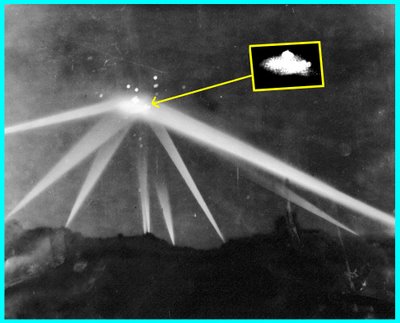


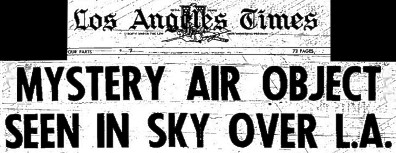
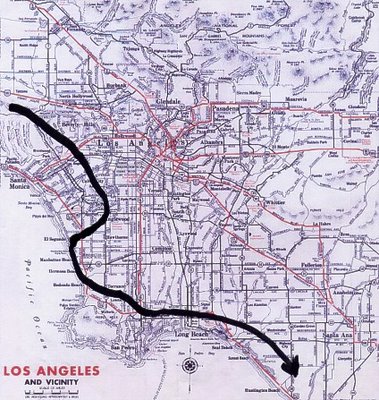
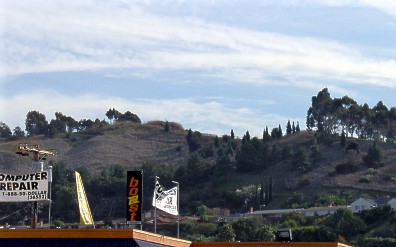
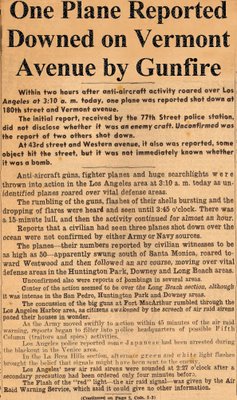





.jpg)